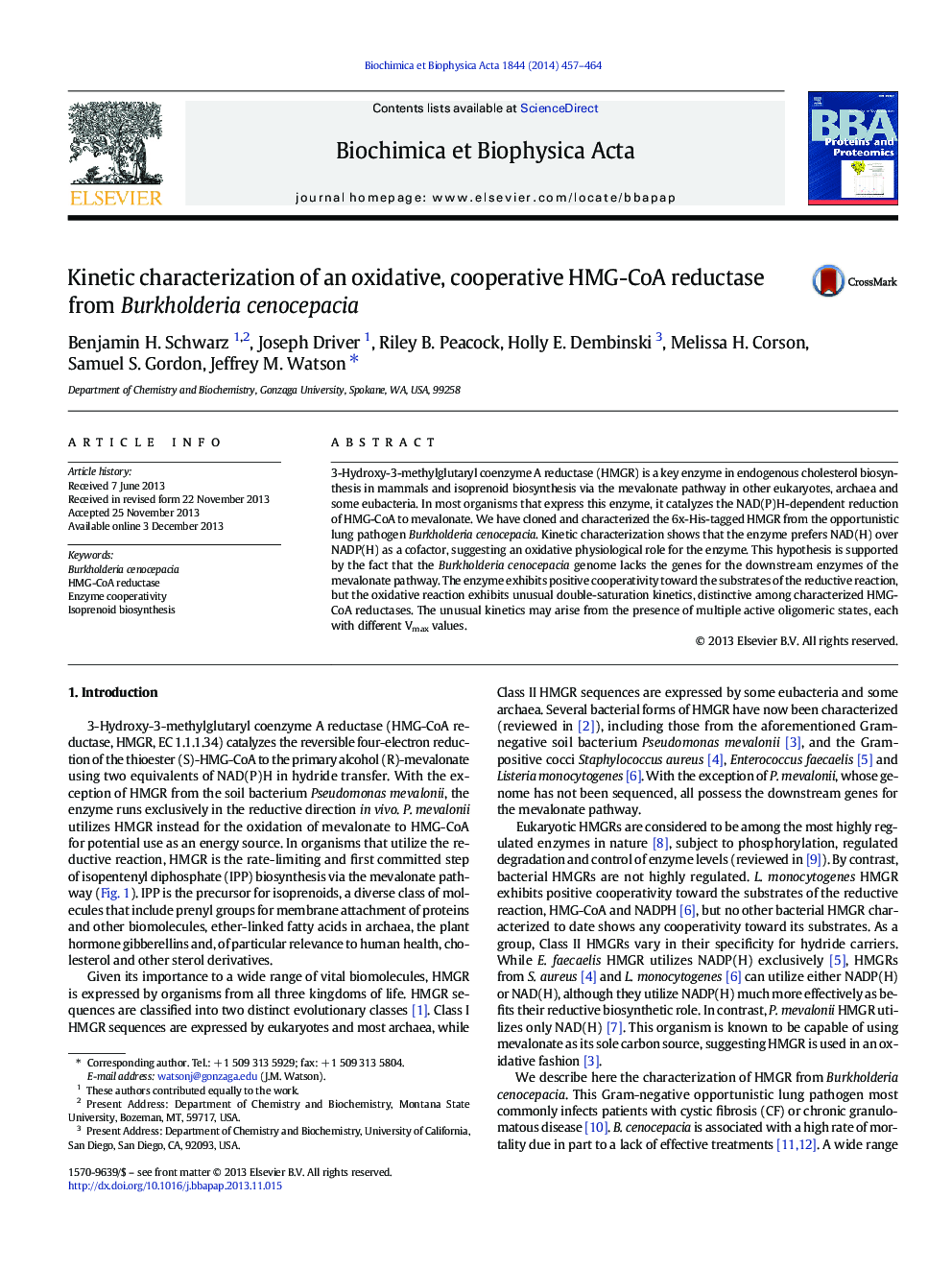| Article ID | Journal | Published Year | Pages | File Type |
|---|---|---|---|---|
| 10536725 | Biochimica et Biophysica Acta (BBA) - Proteins and Proteomics | 2014 | 8 Pages |
Abstract
3-Hydroxy-3-methylglutaryl coenzyme A reductase (HMGR) is a key enzyme in endogenous cholesterol biosynthesis in mammals and isoprenoid biosynthesis via the mevalonate pathway in other eukaryotes, archaea and some eubacteria. In most organisms that express this enzyme, it catalyzes the NAD(P)H-dependent reduction of HMG-CoA to mevalonate. We have cloned and characterized the 6x-His-tagged HMGR from the opportunistic lung pathogen Burkholderia cenocepacia. Kinetic characterization shows that the enzyme prefers NAD(H) over NADP(H) as a cofactor, suggesting an oxidative physiological role for the enzyme. This hypothesis is supported by the fact that the Burkholderia cenocepacia genome lacks the genes for the downstream enzymes of the mevalonate pathway. The enzyme exhibits positive cooperativity toward the substrates of the reductive reaction, but the oxidative reaction exhibits unusual double-saturation kinetics, distinctive among characterized HMG-CoA reductases. The unusual kinetics may arise from the presence of multiple active oligomeric states, each with different Vmax values.
Related Topics
Physical Sciences and Engineering
Chemistry
Analytical Chemistry
Authors
Benjamin H. Schwarz, Joseph Driver, Riley B. Peacock, Holly E. Dembinski, Melissa H. Corson, Samuel S. Gordon, Jeffrey M. Watson,
